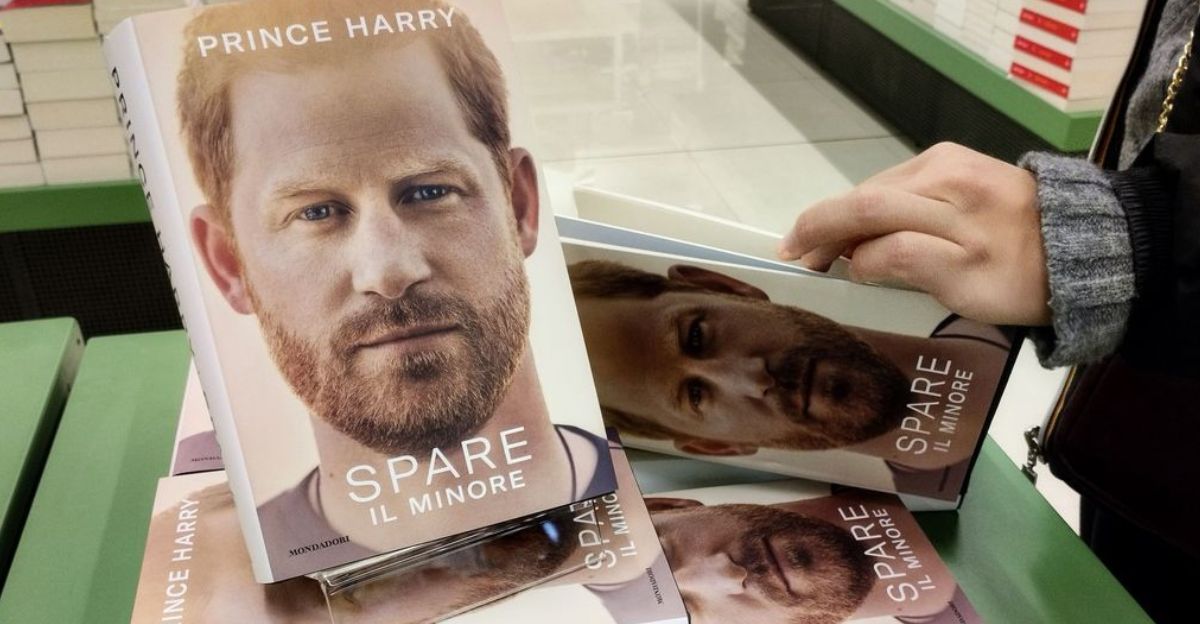
On October 28, 2025, Prince Harry and Meghan Markle were met with loud boos at Dodger Stadium during Game 4 of the World Series between the Los Angeles Dodgers and Toronto Blue Jays. When their images appeared on the Jumbotron, thousands of fans erupted in jeers and sustained boos.
Seated in premium first-row spots near sports legends Magic Johnson and Sandy Koufax, the couple became the unintended focus of public disapproval. The incident highlighted a dramatic fall in American sentiment. Current polling shows Harry’s U.S. approval rating at just 38%, down from his 2018 peak of 77%, illustrating his shift from celebrated royal to polarizing figure.
What Happened at Dodger Stadium?

Harry and Meghan were in prime first-row seats, surrounded by NBA legend Magic Johnson and baseball icon Sandy Koufax. According to eyewitnesses, when the couple appeared on the Jumbotron, the crowd erupted in boos. Harry responded with an awkward laugh and forced smile, while Meghan covered her face. They wore matching Los Angeles Dodgers attire, including blue caps, and tried to enjoy the game as supporters of the team.
Social media quickly amplified the incident. Fans questioned why the royal couple held seats ahead of recognized sports icons, fueling perceptions of entitlement. The real-time rejection reflected a shift long suggested by polling: millions of Americans had grown increasingly skeptical of the couple’s media presence and public ventures. What unfolded at the stadium was more than a moment of sports entertainment—it was a reflection of seven years of declining approval.
The Crowd’s Reaction Went Viral

The booing spread rapidly across social media, becoming a lightning rod for long-simmering public resentment. While some fans expressed support, many questioned the couple’s seating and media visibility. Observers noted that the incident was not a single event but a culmination of years of public scrutiny, repeated interviews, and high-profile media projects.
Fans across platforms debated the couple’s perceived entitlement and criticized their repeated storytelling. The stadium moment became a visible symbol of broader cultural and generational divides in opinion. Americans who once sympathized with the couple now expressed frustration at what they saw as excessive exposure and prioritization, signaling a long-term erosion of support.
Harry’s Popularity Peak and Early Sympathy
Harry’s highest favorability among Americans came in November 2018, reaching 77% following his royal wedding, which drew an estimated 29.2 million U.S. viewers. At that time, he embodied a rebellious royal whose personal narrative resonated widely, even surpassing Queen Elizabeth II’s 74% approval.
When Harry and Meghan stepped back from royal duties in 2020 and 2021, initial sympathy grew. The March 2021 Oprah Winfrey interview, watched by 17.1 million Americans, briefly boosted Harry’s approval, especially among younger viewers aged 18-34 who related to themes of independence and mental health advocacy.
However, this sympathy proved temporary. By late 2022, media ventures, including documentaries and books, began to erode goodwill. Early public affection, once strong and steady, started to wane under repeated exposure and controversial revelations, laying the groundwork for future declines.
Tell-All Media Backfired

The couple’s high-profile media projects accelerated disfavor. In December 2022, Netflix released the six-part docuseries Harry & Meghan, generating controversy despite massive viewership of roughly 81.6 million hours in the first four days. Harry’s memoir, Spare, released in January 2023, intensified scrutiny. Following its release, his approval plummeted to 31%, with 44% of Americans viewing his revelations about family conflicts and criticisms of senior royals as excessive.
Rather than restoring popularity, these projects created audience fatigue. Repeated disclosures were particularly damaging to older demographics and those valuing privacy and discretion. PR experts cited “overexposure” as a central factor, noting the tension between calling for privacy while maximizing media visibility damaged credibility and deepened public disfavor.
The Seven-Year Decline and Comparisons

From 2018 to 2019, Harry enjoyed broad approval across U.S. demographics. By 2025, YouGov polling shows him at just 38% approval with a net favorability of +17—a 40-point decline from his peak.
In contrast, Prince William maintains roughly 63% favorability, reflecting public preference for restraint over repeated disclosures. Meghan Markle’s approval initially mirrored Harry’s decline but has rebounded modestly, gaining 11 points to reach a net approval of +15.
Support for Harry remains sharply divided by age and political perspective. Younger Americans continue to show more favorable sentiment, while older audiences remain critical. Communications professionals argue that repeated media saturation exhausted sympathetic audiences, turning early enthusiasm into disapproval and setting the stage for moments like the October 28 booing.
From Beloved to Cautionary Tale
Harry’s seven-year fall from 77% approval to a net favorability of +17 illustrates the risks of public overexposure. The World Series incident symbolized a broader cultural shift, reflecting a public that grew weary of repeated disclosures, memoirs, and interviews. Once celebrated for independence and mental health advocacy, Harry now exemplifies the consequences of narrative overextension and audience fatigue.
The Sussexes’ journey underscores the limits of tell-all culture. Initial support eroded as Americans questioned attention-seeking behaviors and lack of accountability. The Dodger Stadium moment was not an isolated rejection—it was the visible culmination of years of declining favor, verified by polling, media narratives, and the reactions of thousands of real-time witnesses.